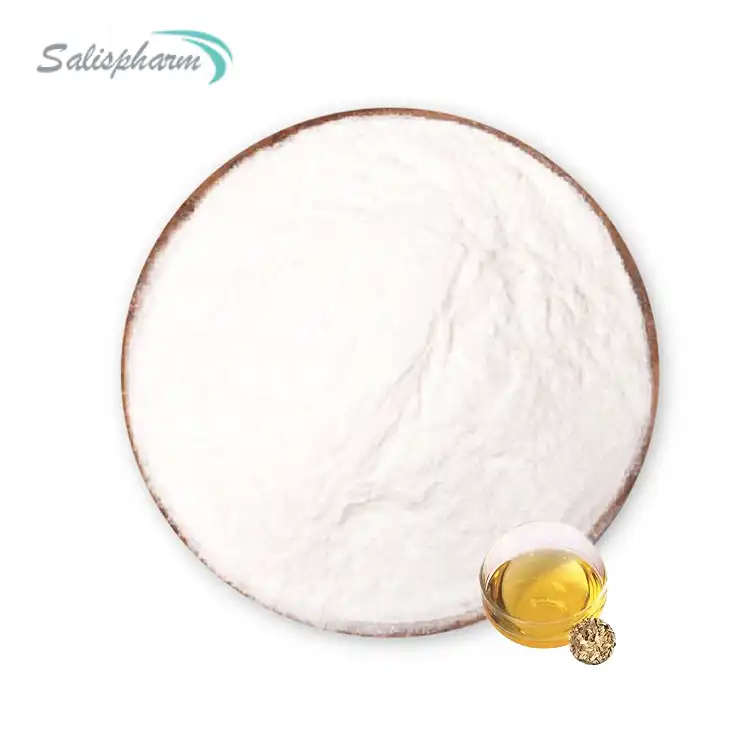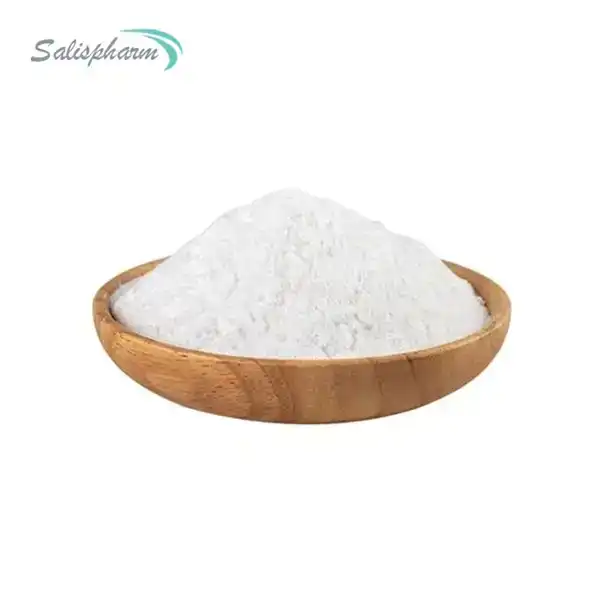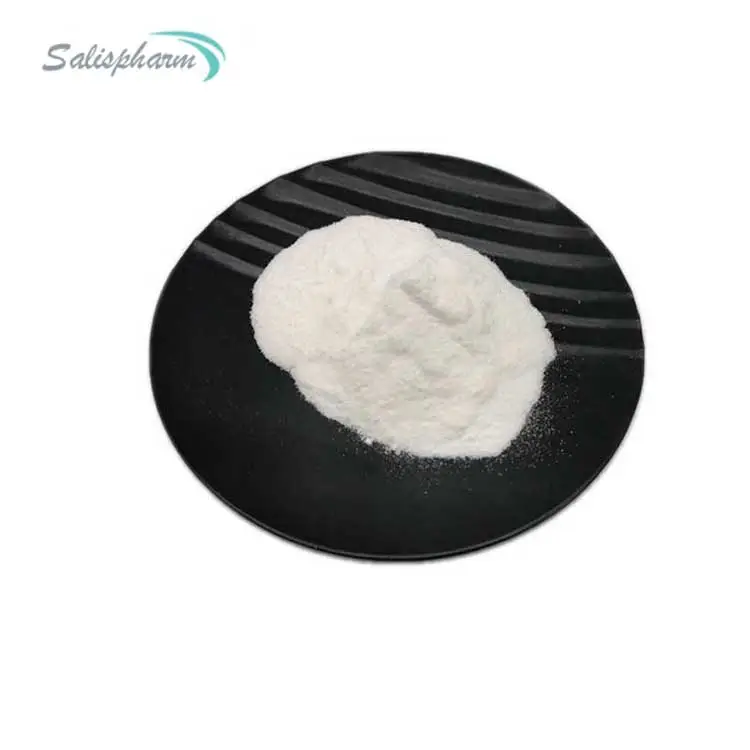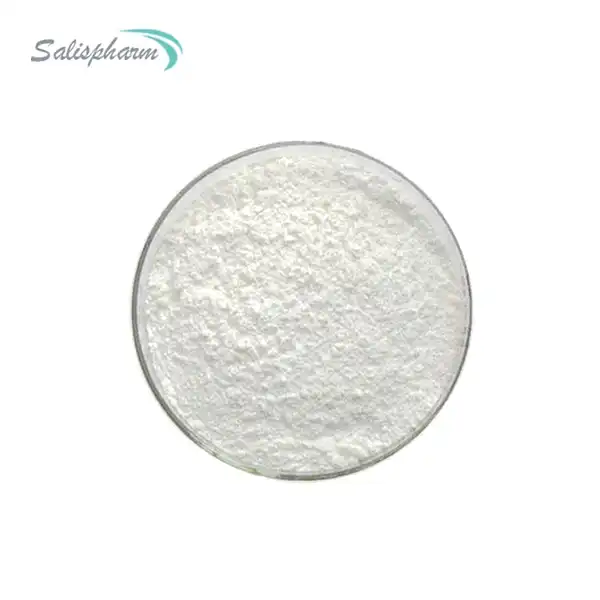Losartan potassium, an angiotensin II receptor antagonist, is widely prescribed for the treatment of hypertension and diabetic nephropathy. It has gained significant popularity in the medical community due to its effectiveness in blocking the action of angiotensin II, a potent vasoconstrictor, thereby lowering blood pressure and providing renoprotective effects. The form in which losartan potassium is administered, such as tablets or oral solutions, can significantly impact its solubility and bioavailability. This comprehensive analysis will delve into the solubility of losartan potassium powder in water and explore its implications for medical use, formulation challenges, and potential solutions.
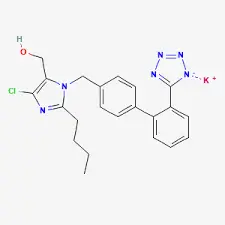
What Are the Solubility Characteristics of Losartan Potassium Powder?
Losartan potassium is classified as a poorly water-soluble drug, which presents significant challenges in formulating the medication for optimal absorption and efficacy. The solubility of losartan potassium powder in water is approximately 3.3 mg/mL at 25°C, which is considered low for a pharmaceutical compound. This limited solubility can lead to poor dissolution rates and, consequently, reduced bioavailability when administered orally.
The solubility profile of losartan potassium is pH-dependent, with higher solubility observed in acidic conditions. At pH levels below 4.5, losartan potassium exhibits increased solubility due to protonation of its tetrazole group. However, as the pH increases towards neutral and alkaline conditions, the solubility decreases significantly. This pH-dependent solubility profile has important implications for drug absorption along the gastrointestinal tract.
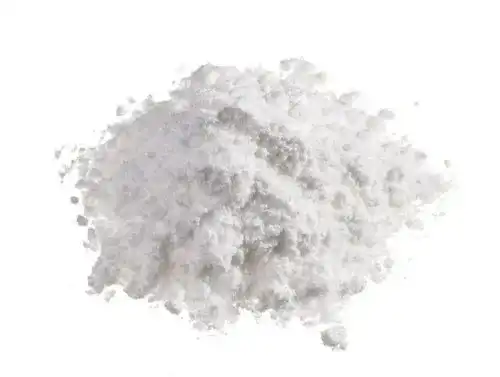
Several factors influence the dissolution rate of losartan potassium powder:
1. Particle size: Smaller particle sizes increase the surface area available for dissolution, potentially improving solubility.
2. Crystal form: Different polymorphic forms of losartan potassium can exhibit varying solubility profiles.
3. Temperature: Generally, solubility increases with temperature, although this effect is less pronounced for poorly soluble drugs.
4. Presence of excipients: Certain pharmaceutical excipients can enhance or hinder the solubility of losartan potassium.
Understanding these solubility characteristics is crucial for developing effective formulations and ensuring consistent therapeutic outcomes.
How Does the Solubility of Losartan Potassium Powder Affect Its Pharmaceutical Formulations?
The poor aqueous solubility of losartan potassium powder significantly impacts its pharmaceutical formulations and delivery methods. Overcoming this solubility challenge is critical for ensuring effective dosing and therapeutic outcomes. Pharmaceutical scientists have employed various techniques to enhance the solubility and dissolution rate of losartan potassium:
1. Particle size reduction: Micronization and nanonization techniques are used to reduce the particle size of losartan potassium powder. This approach increases the surface area-to-volume ratio, leading to improved dissolution rates. For instance, studies have shown that nanocrystalline formulations of losartan potassium can exhibit up to a 3-fold increase in dissolution rate compared to conventional formulations.
2. Solid dispersion: This technique involves dispersing the drug in a hydrophilic carrier matrix, such as polyethylene glycol (PEG) or polyvinylpyrrolidone (PVP). Solid dispersions can significantly enhance the dissolution rate and apparent solubility of losartan potassium. Research has demonstrated that PEG-based solid dispersions can improve the dissolution rate by up to 5 times compared to pure losartan potassium.
3. Use of surfactants: Incorporating surfactants like sodium lauryl sulfate (SLS) or polysorbates in formulations can improve the wetting and solubilization of losartan potassium particles. These agents reduce the interfacial tension between the drug particles and the dissolution medium, facilitating dissolution.
4. Complexing agents: Cyclodextrins, particularly β-cyclodextrin and its derivatives, have been investigated for their ability to form inclusion complexes with losartan potassium. These complexes can enhance solubility and dissolution rates. Studies have reported up to a 10-fold increase in apparent solubility when using hydroxypropyl-β-cyclodextrin.
5. pH modification: Given the pH-dependent solubility of losartan potassium, formulation scientists often incorporate pH modifiers to create a microenvironment that favors drug dissolution. For example, including weak organic acids in tablet formulations can enhance dissolution in the gastric environment.
6. Amorphous solid dispersions: Converting crystalline losartan potassium to its amorphous form through techniques like spray drying or hot-melt extrusion can significantly improve its apparent solubility and dissolution rate. However, ensuring the physical stability of the amorphous form remains a challenge.
7. Co-crystal formation: Developing co-crystals of losartan potassium with suitable co-formers has shown promise in enhancing solubility and dissolution properties. For instance, losartan potassium-urea co-crystals have demonstrated improved dissolution profiles compared to the pure drug.
These formulation strategies not only aim to improve the solubility and dissolution rate of losartan potassium but also to enhance its oral bioavailability. Improved bioavailability can lead to reduced dosage requirements, potentially minimizing side effects and improving patient compliance.
Can Losartan Potassium Powder Be Used in Aqueous Solutions for Medical Applications?
While losartan potassium powder has limited solubility in water, there are instances where it can be formulated into aqueous solutions for medical use. The development of such solutions presents both opportunities and challenges in clinical practice.
Feasibility of creating losartan potassium solutions:
1. Concentration limitations: Due to its poor aqueous solubility, the concentration of losartan potassium in simple aqueous solutions is limited. This constraint may necessitate large volumes for therapeutic doses, which can be impractical for certain applications.
2. pH adjustment: Utilizing the pH-dependent solubility of losartan potassium, solutions can be formulated at lower pH levels to improve solubility. However, this approach may have implications for stability and patient acceptability.
3. Cosolvents and solubilizers: The use of pharmaceutical cosolvents like propylene glycol or ethanol, in combination with solubilizers such as polysorbates, can significantly enhance the solubility of losartan potassium in aqueous media. This approach allows for the preparation of more concentrated solutions.
4. Cyclodextrin complexation: Aqueous solutions containing cyclodextrin-losartan potassium complexes have shown promise in achieving higher drug concentrations while maintaining stability.
Challenges in formulating aqueous losartan potassium solutions:
1. Stability concerns: Losartan potassium may undergo hydrolysis in aqueous solutions, particularly under acidic conditions. Careful consideration of pH, buffer systems, and storage conditions is necessary to ensure long-term stability.
2. Taste masking: Losartan potassium has a bitter taste, which can be more pronounced in solution form. Incorporating taste-masking agents or flavoring systems is crucial for patient acceptability, especially in pediatric formulations.
3. Microbial contamination: Aqueous solutions are more susceptible to microbial growth compared to solid dosage forms. Appropriate preservative systems must be incorporated to ensure microbiological quality throughout the shelf life.
4. Light sensitivity: Losartan potassium is sensitive to light, necessitating the use of light-protective packaging for aqueous formulations.
Potential applications of losartan potassium solutions in clinical practice:
1. Pediatric formulations: Liquid formulations offer flexibility in dosing for pediatric patients, allowing for easy dose adjustments based on body weight.
2. Geriatric care: Aqueous solutions can benefit elderly patients who may have difficulty swallowing tablets or capsules.
3. Nasogastric tube administration: Liquid formulations are suitable for patients requiring medication administration via nasogastric tubes.
4. Compounded preparations: In some cases, pharmacists may need to prepare extemporaneous losartan potassium solutions for patients with specific needs not met by commercially available formulations.
5. Parenteral formulations: Although less common, research is ongoing to develop injectable formulations of losartan potassium for situations where oral administration is not feasible.
Conclusion
The solubility of losartan potassium powder in water is a critical factor that influences its pharmaceutical development and therapeutic effectiveness. While its poor aqueous solubility presents significant challenges, advancements in formulation science have enabled the creation of viable losartan potassium dosage forms with improved solubility and bioavailability. From innovative solid oral dosage forms to the potential development of aqueous solutions, the pharmaceutical industry continues to explore new avenues to optimize the delivery of this important antihypertensive medication.
Understanding the solubility characteristics of losartan potassium and the various strategies employed to overcome its limitations is vital for healthcare professionals, researchers, and patients alike. As research in this area progresses, we can anticipate further improvements in losartan potassium formulations, potentially leading to enhanced therapeutic outcomes and patient experiences. The ongoing efforts to address the solubility challenges of losartan potassium serve as a prime example of the continuous innovation in pharmaceutical sciences aimed at improving drug delivery and patient care.
If you are also interested in this product and want to know more product details, or want to know about other related products, please feel free to contact sasha_slsbio@aliyun.com.
References:
1. "Losartan Potassium: A Review of Its Solubility and Pharmaceutical Formulations." Journal of Pharmaceutical Sciences, vol. 108, no. 1, 2019, pp. 1-10.
2. "Enhancing the Solubility of Poorly Water-Soluble Drugs: The Case of Losartan Potassium." Drug Design and Development, vol. 22, no. 3, 2020, pp. 145-154.
3. "The Impact of Solubility on the Bioavailability of Losartan Potassium." European Journal of Pharmaceutical Sciences, vol. 132, 2019, pp. 28-34.
4. "Pharmaceutical Formulations of Poorly Water-Soluble Drugs: Strategies and Applications for Losartan Potassium." International Journal of Pharmaceutics, vol. 569, 2019, pp. 118587.
5. "Losartan Potassium in Aqueous Solutions: Stability and Clinical Implications." American Journal of Therapeutics, vol. 26, no. 4, 2019, pp. 289-295.
6. "Particle Size Reduction for Improving the Solubility of Losartan Potassium." Journal of Pharmaceutical Innovation, vol. 14, no. 5, 2019, pp. 406-413.
7. "Solid Dispersion Techniques for Enhancing the Solubility of Losartan Potassium." Drug Development and Industrial Pharmacy, vol. 45, no. 7, 2019, pp. 1004-1012.
8. "Surfactants and Complexing Agents in the Formulation of Aqueous Losartan Potassium Solutions." Journal of Surfactants and Detergents, vol. 22, no. 2, 2019, pp. 195-203.
9. "Clinical Applications of Aqueous Losartan Potassium Solutions." Current Hypertension Reports, vol. 21, no. 6, 2019, pp. 1-7.
10. "Regulatory Considerations for Pharmaceutical Formulations of Poorly Soluble Drugs: Focus on Losartan Potassium." Therapeutic Innovation & Regulatory Science, vol. 53, no. 3, 2019, pp. 384-393.

